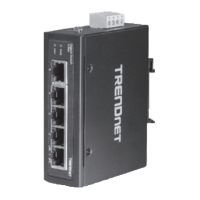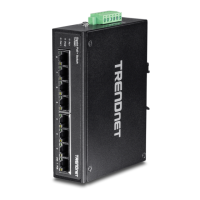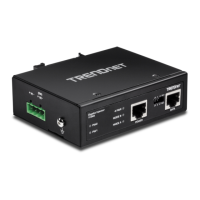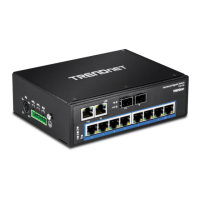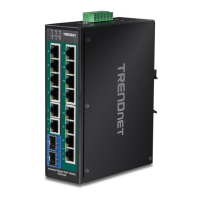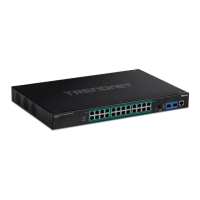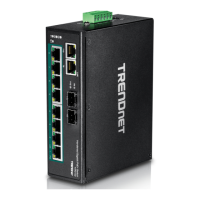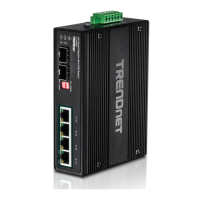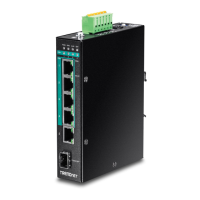© Copyright 2018 TRENDnet. All Rights Reserved.
Managed Industrial L2 Switch
This command displays the current DHCP relay
configurations.
dhcp relay (disable
| enable)
This command disables/enables the DHCP
relay on the switch.
dhcp relay vlan
VLAN_RANGE
This command enables the DHCP relay
function on a VLAN or a range of VLANs.
no dhcp relay vlan
VLAN_RANGE
This command disables the DHCP relay
function on a VLAN or a range of VLANs.
dhcp helper-
address
IP_ADDRESS
This command configures the DHCP server’s IP
address.
This command removes the DHCP server’s IP
address.
Example:
[DEVICE_NAME]#configure terminal
[DEVICE_NAME](config)#interface eth0
[DEVICE_NAME](config-if)#ip address 172.20.1.101/24
[DEVICE_NAME](config-if)#ip address default-gateway 172.20.1.1
[DEVICE_NAME](config)#dhcp relay enable
[DEVICE_NAME](config)#dhcp relay vlan 1
[DEVICE_NAME](config)#dhcp helper-address 172.20.1.1
Web Configuration
Advanced Settings > DHCP Relay
Enables / disables the DHCP relay for the Switch.
Enables / disables the DHCP relay on the specific VLAN(s).
Configures the DHCP server’s IP address.
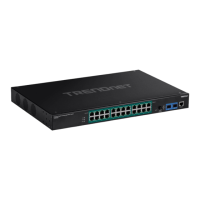
